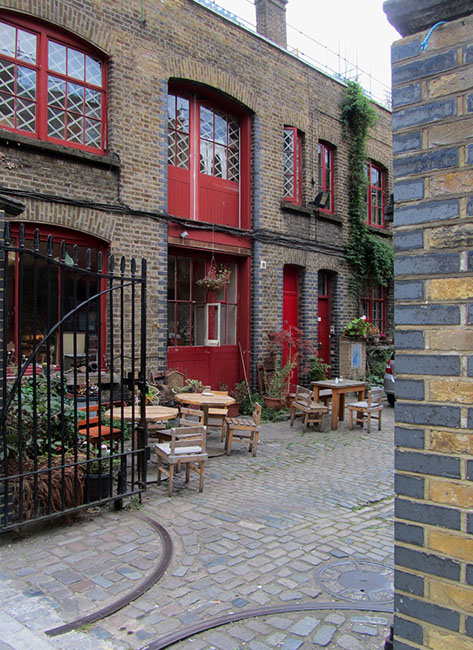The Pullens Estate London (GB)
Abstract
In the Pullens Estate, built near Elephant and Castle, London in 1886-1901, 684 one-bedroom apartments were built in 12 austere tenement blocks across six streets. Each of the ground- and first-floor flats extended into a contiguous workspace that backed onto one of four cobbled yards. This unique arrangement developed the mews model around the needs of the manufacturing poor: blue-collar workhomes. Combining workers’ housing with industrial units, it allowed artisans, small traders and their families to live and work on the premises. Ground-floor shops with elaborate glazed timber frontages, facing outwards onto the street on either side of the gated entrance to each yard, also combined with adjacent living space.
Taller and wider residential streets alternated with smaller-scale, narrower light industrial/commercial yards to create separate (clean and quiet) living and (noisy and dirty) working environments. Although only really apparent from the streets that run perpendicular to the yards, the unconventional nature of the estate gives its inhabitants a sense of identity. The close association of homes and workshops means this dense development has always been inhabited throughout the 24 hours of the day, stimulating local social networks, the local economy and contributing to a busier and therefore safer neighbourhood. The yards are closed at one end, preventing through traffic; their gated entrances are located in imposing brick walls. The resultant sense of enclosure and place contributes to the development of community among working neighbours. Shared entrances to the apartments, and collective gardens and washing lines on flat roofs overlooking the yards, have a similar impact on those who live next door to each other.



